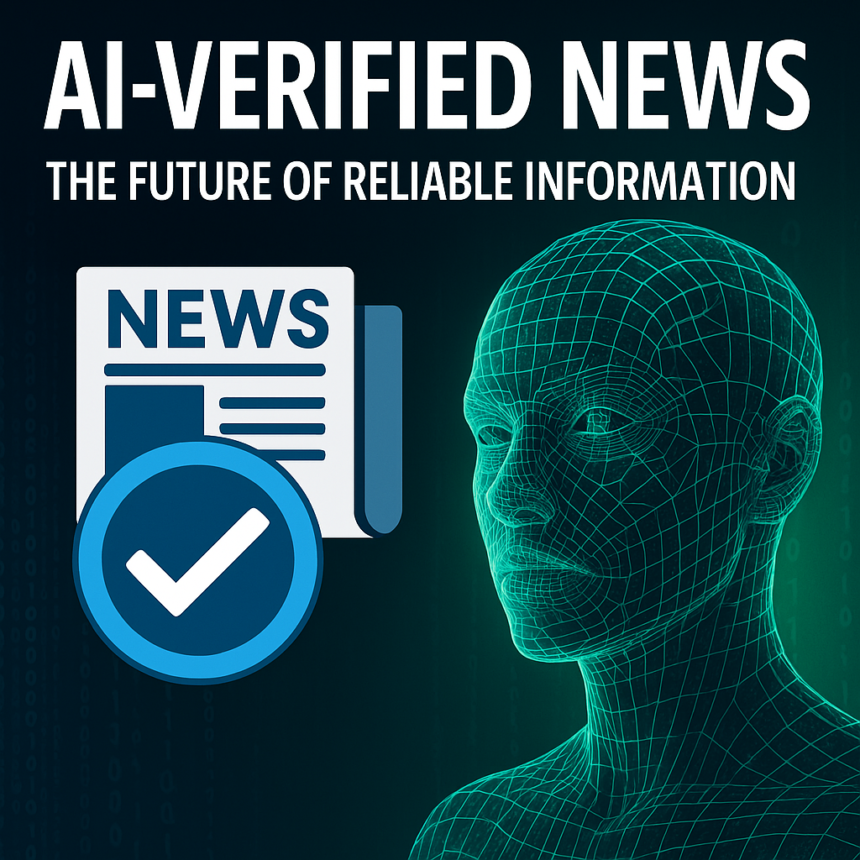Understanding AI Verification in News
AI verification refers to the application of artificial intelligence technologies in the process of validating information within news articles and reports. At the core of AI verification are advanced machine learning algorithms and natural language processing (NLP) techniques that enable computers to understand, analyze, and interpret vast quantities of data. These technologies work together to discern the credibility of news sources by assessing various factors such as the author’s background, previous accuracy, and the overall reputation of the publication. This plays a critical role in ensuring that readers receive reliable and trustworthy information.
One of the key functionalities of AI verification is its capability to fact-check claims made in news articles. By cross-referencing information against a wide array of verified databases, AI can efficiently verify the accuracy of different assertions. This rapid analysis not only saves time but also enhances the accuracy of the news disseminated to the public, significantly reducing the chances of spreading misinformation. Furthermore, AI can identify inconsistencies or signals of falsehood, thereby alerting both journalists and consumers to potentially misleading content.
Transparency in the AI verification process is paramount for fostering trust among users. Understanding how AI tools reach their conclusions can instill confidence in the news presented. Renowned platforms are beginning to implement these technologies, showcasing how they can ethically maintain transparency while enhancing the reliability of information. For instance, tools like Full Fact and ClaimBuster leverage AI verification to assess the factual accuracy of public statements and media content, thus contributing positively to journalistic integrity. The role of AI in verification not only streamlines the reporting process but also encourages the industry to uphold higher standards of accuracy and accountability.
Benefits and Challenges of AI-Verified News
The advent of artificial intelligence (AI) has ushered in a new era for the verification of news, offering several benefits that can enhance the quality and reliability of information consumed by the public. One of the most significant advantages is increased accuracy. AI can analyze vast amounts of data in real-time, enabling it to identify misinformation and verify facts rapidly, thereby reducing the dissemination of false information. This capability is crucial in an age where information spreads quickly, and the line between fact and fiction becomes increasingly blurred.
Additionally, AI technology can help mitigate bias in reporting. Unlike human journalists, AI algorithms can evaluate news sources and content with a level of impartial analysis, which can lead to more balanced reporting. By utilizing AI to cross-reference facts and draw from diverse sources, news organizations can foster greater transparency and equity in journalism, ultimately enhancing public trust. Furthermore, the rapid fact-checking processes enabled through AI can empower readers with timely, reliable information, which is essential in making informed decisions in today’s fast-paced world.
However, the integration of AI in the news verification process comes with its challenges. One significant concern is the potential for job displacement within the journalism sector. As AI systems become more sophisticated, there is apprehension that many traditional roles may become obsolete, raising questions about the future of employment in this field. Additionally, there is a risk of over-reliance on technology, which could lead to diminished human oversight in the news verification process. This raises ethical considerations regarding the decision-making capabilities of AI, particularly in sensitive situations where context and nuance are crucial. Ensuring a balanced approach that incorporates both AI and human judgment will be vital in addressing these concerns while harnessing the benefits of AI-verified news.





